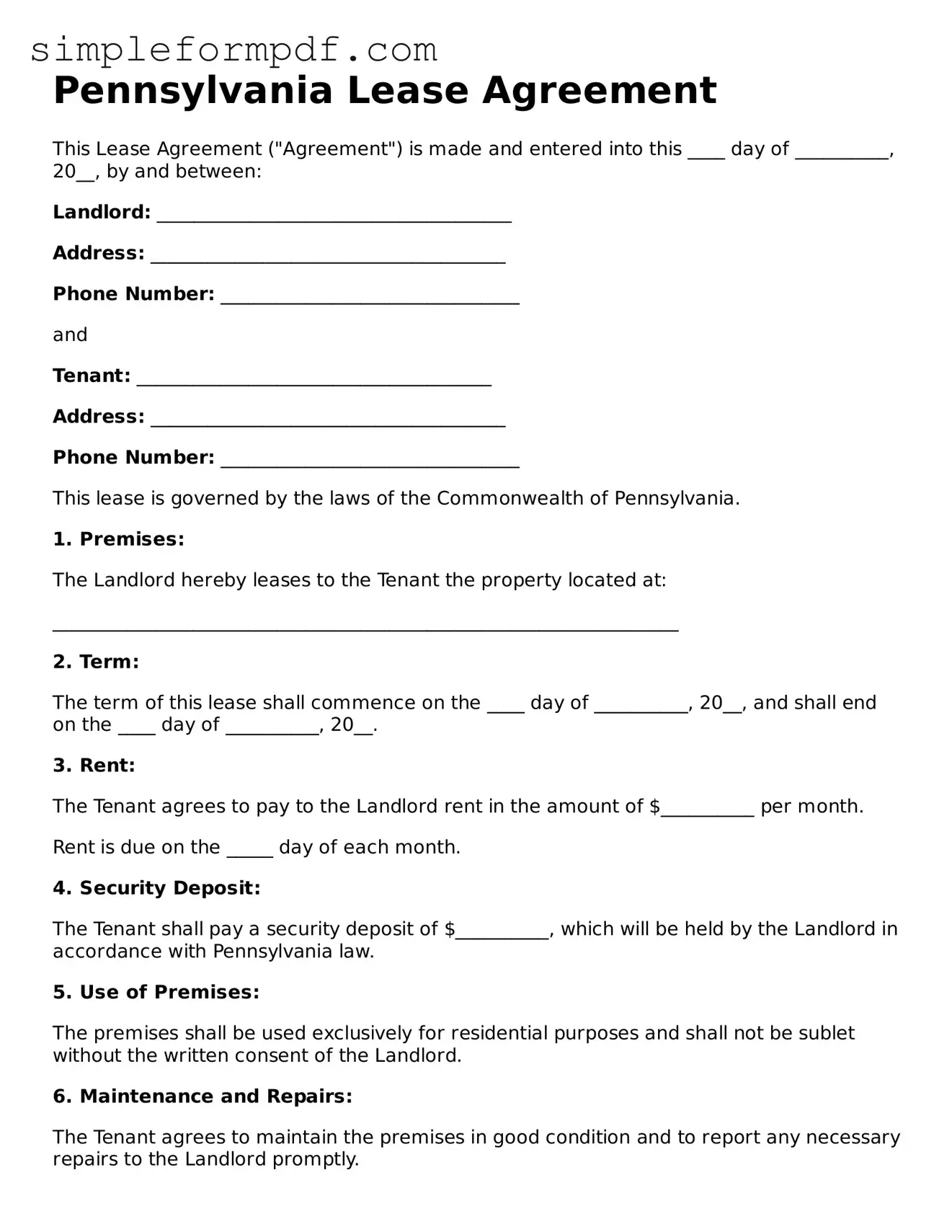Pennsylvania Lease Agreement
This Lease Agreement ("Agreement") is made and entered into this ____ day of __________, 20__, by and between:
Landlord: ______________________________________
Address: ______________________________________
Phone Number: ________________________________
and
Tenant: ______________________________________
Address: ______________________________________
Phone Number: ________________________________
This lease is governed by the laws of the Commonwealth of Pennsylvania.
1. Premises:
The Landlord hereby leases to the Tenant the property located at:
___________________________________________________________________
2. Term:
The term of this lease shall commence on the ____ day of __________, 20__, and shall end on the ____ day of __________, 20__.
3. Rent:
The Tenant agrees to pay to the Landlord rent in the amount of $__________ per month.
Rent is due on the _____ day of each month.
4. Security Deposit:
The Tenant shall pay a security deposit of $__________, which will be held by the Landlord in accordance with Pennsylvania law.
5. Use of Premises:
The premises shall be used exclusively for residential purposes and shall not be sublet without the written consent of the Landlord.
6. Maintenance and Repairs:
The Tenant agrees to maintain the premises in good condition and to report any necessary repairs to the Landlord promptly.
7. Termination:
Either party may terminate this Agreement upon giving _____ days written notice to the other party.
8. Governing Law:
This Agreement shall be governed by the laws of the Commonwealth of Pennsylvania.
9. Signatures:
In witness whereof, the parties have executed this Lease Agreement as of the date first above written.
Landlord Signature: _______________________________
Date: ________________________
Tenant Signature: ________________________________
Date: ________________________
